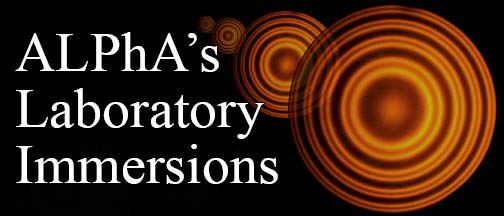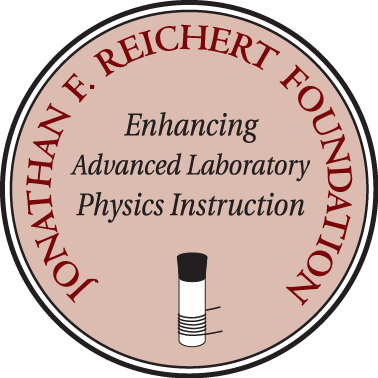- Home
- What We Do
- Laboratory Immersions
- Immersions 2024
- Imm2024UND_TransientAbsorptionSpect
University of North Dakota, Grand Forks, ND
Nanosecond Time-Resolved Transient Absorption Spectroscopy
June 25, 2024 to June 27, 2024
Number of setups
available: 1
Maximum
number of participants: 2
------------------------------------------------------------------------------------------------------------------------------------------
 This lab uses short-pulse (ns) transient laser spectroscopy to study excited triplet state population dynamics of zinc-tetraphenylporphyrin (ZnTPP). The primary goal of the lab is to give the student a foundational knowledge of short-pulse laser spectroscopy needed to better understand more advanced femto/attosecond spectroscopy techniques.
This lab uses short-pulse (ns) transient laser spectroscopy to study excited triplet state population dynamics of zinc-tetraphenylporphyrin (ZnTPP). The primary goal of the lab is to give the student a foundational knowledge of short-pulse laser spectroscopy needed to better understand more advanced femto/attosecond spectroscopy techniques.
The spectrometer for this lab will be built using the Time-Resolved Absorption Spectroscopy Educational Kit sold by Thorlabs®. The setup contains two pulsed lasers. One for exciting the molecules and the other (probe laser) monitors the concentration of molecules in the triplet state. Optics to guide the beams to intersect inside the sample, a photo detector to measure the transmitted intensity of the probe beam, and data acquisition hardware are included.
2023 Nobel Prize in Physics, awarded "for experimental methods that generate attosecond pulses of light for the study of electron dynamics in matter," highlights the importance of short-pulsed laser spectroscopy. These techniques have wide range of applications including precision materials processing, medical applications, and investigating and influencing electron dynamics during reactions.
Students learn, among other things, basic to intermediate optical alignment techniques, choosing appropriate parameters for the pulsed lasers, sample preparation, optimizing pump-probe interaction volume, and selecting appropriate data acquisition parameters.
First item on the first day will be reviewing laser safety protocols. This will be followed by a review of underlying theory and important features of the setup and procedures. During this process, we will introduce ourselves to the components of the kit. We will end the day by fine tuning our laser alignment skills needed to do the lab. If needed, we will even do “beam walks.”
First task of the second day will be the building of the spectrometer and aligning the beams to optimize the detector output. Once done, we are ready to measure our first set of samples: ZnTPP and Benzonitrile Anhydrous (BN) mixtures with different ZnTPP:BN ratios. The triplet state of ZnTPP is responsible for absorbing the probe laser photons. We will measure transmission of the probe laser as a function of time as the triplet state decays. With that data, we can measure the reaction constant (kq) for the triplet state. We will measure kq for different ZnTPP:BN ratios. During the last part of the second day, we will investigate photoinduced electron transfer (PET) between ZnTPP and C70 by measuring the transmission through ZnTPP+BN+ C70 mixture. PET phenomena is crucial for use of ZnTPP in light harvesting. There is a good chance that this part of the lab will spill over to the third day.
Let’s plan on sharing your results and conclusions with the rest of us via a short presentation on the third day.
Bringing your own laptop is encouraged.
450nm and 520 nm class IIIB lasers are used in this lab. Appropriate safety glasses will be provided.
Approximate cost of the spectrometer cost and the sample kit is about $9500. You can find details at:
https://www.thorlabs.com/newgrouppage9.cfm?objectgroup_id=14444

Host and Mentor:
Please note that the Jonathan F. Reichert Foundation has established a grant program
to help purchase apparatus used in Laboratory Immersions. Limitations
and exclusions apply, but generally speaking the Foundation may support
up to 50% of the cost of the required equipment.




